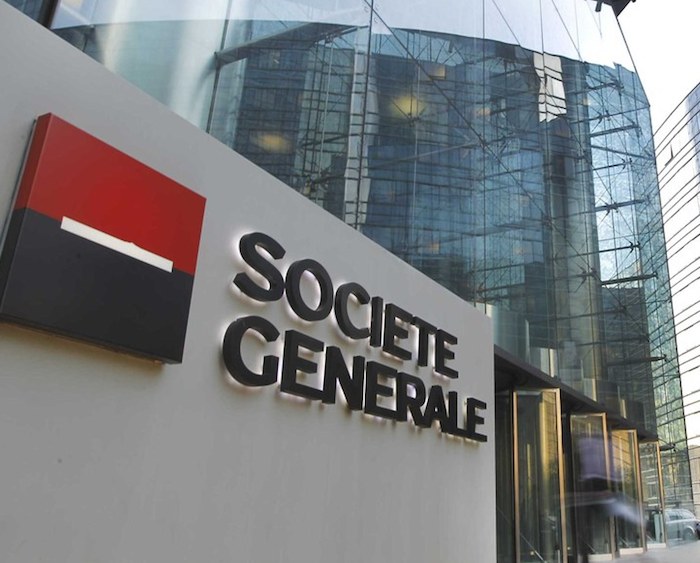The agricultural commodities downturn, which has driven prices near historic lows, has further to run, Societe Generale said, recommending short bets in cotton, hogs and wheat, and seeing only modest scope for gains in other contracts.
The bank, in a quarterly commodities briefing, forecast 2018 proving a “year of inflection” for raw materials as a whole, as the “spectacular” rally for the asset class as a whole late this year faces the potential for a world economic slowdown in 2019, driven by the rise of protectionism.
However, while seeing potential for gains in the likes of natural gas, lead and nickel, which SocGen rated as buys for investors, in agriculture, its price forecasts remained near-universally at or below futures curves.
In Chicago corn, for instance, the bank said the price outlook was “decidedly bearish”, particularly for futures in “longer maturities”, forecasting futures at about $3.50 a bushel in a year’s time – 10% below the price that December 2018 futures closed the last session at.
The forecast reflected an expectation of US corn stocks ending this season at a 29-year high of 2.56bn bushels, some 70m bushels above the US Department of Agriculture forecast, as US exports suffer a “sharp drop” in the face of strong competition from South American shipments.
‘Better seed varieties, agrichemicals…’
However, the bank recommended a sell bet in Chicago wheat, for which it saw even bigger prospects for price falls, forecasting spot values at $4.40 a bushel in a year’s time, 12% below the value of December 2018 futures.
At current values “US wheat remains by-and-large uncompetitive in a globally oversupplied market”, SocGen analyst Rajesh Singla said, seeing the prospect of further growth in world output in 2018-19, of 2.5% to 637m tonnes, excluding China.
“Any winter wheat acreage reduction in the European Union and in the US [for the 2018 harvest] will be offset by increases in the former Soviet Union and Argentina.”
Indeed, Russian yields could improve further given that, even at this year’s bumper levels, they remain 46% below the EU average
“Use of better seed varieties, agrichemicals and favourable weather in Russia could push yields higher again in 2018-19.”
‘Downward pressure on prices’
Among soft commodities, the bank recommended a short in New York cotton futures too, seeing values at 66.0 cents a pound in a year’s time, nearly 7% below the price investors are factoring in to the December 2018 contract.
The forecast reflected expectations of an 11.4% growth in acreage for 2018-19, given that “forward cotton prices are still profitable for most regions”, with yields seen rising too as farmers invest more in fertilizers.
Although in the key Chinese market, prices are not strong enough to see growers raise sowings “substantially”, reserves “will be more than sufficient to meet the [production] deficit for a few more years”.
The extent of world supplies “should put downward pressure on cotton prices, even though demand for US cotton is expected to remain strong”, Mr Singla said.
‘Too aggressive’
In the livestock complex, SocGen recommended a short bet in Chicago-traded lean hog futures for June, seeing futures average 67.0 cents a pound in the April-to-June quarter.
That is 19% below the level that the June contract closed at in the last session.
The forecast reflected an assessment that “USDA estimates of 3.4% growth in US per capita pork consumption in 2018 are too aggressive”, with the bank seeing “downside risk to these estimates”.
“Weaker domestic demand growth in the US and expectations for a recovery in hog production in China in 2018 are the key reason we are bearish on 2018 lean hog contracts,” Mr Singla said, forecasting a recovery in Chinese output next year undermining pork imports from the US.
Arabica vs robusta
The bank also recommended a long bet in robusta coffee futures, against a short position in arabica coffee, on a late-2018 timescale, should the premium of arabica beans exceed about 50 cents a pound.
“Global coffee supplies remain comfortable, but a supply surplus on arabica coupled with a supply deficit on robusta makes a strong arabica premium untenable,” Mr Singla said.
The forecast reflected an expectation of a third successive world robusta output deficit in 2018-19, this time of 3.41m bags, with Vietnam output estimated at 26.3m bags, and that of Brazil at 13.4m bags, well below historical highs.
Arabica beans are poised next season to extend a longstanding run of surpluses on SocGen estimates, of 6.34m bags, helped by a near-44m-bag Brazilian crop, and a further nudge higher in Colombian output to 14.4m bags.


